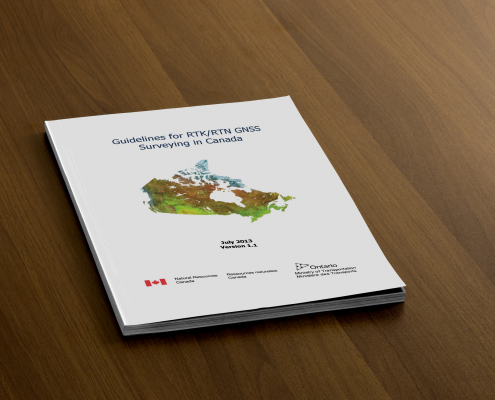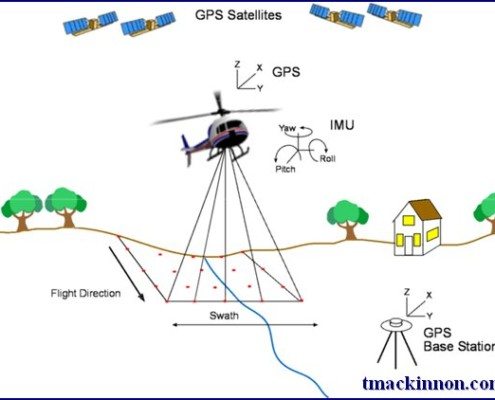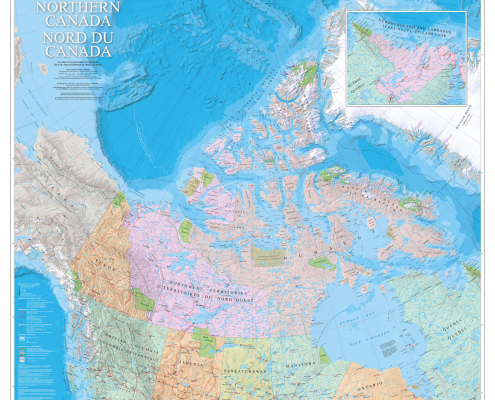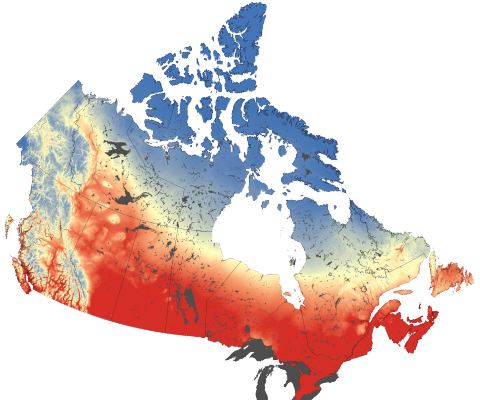![World Shaded Relief KMZ file [free download] World Shaded Relief Map](https://canadiangis.com/wp-content/uploads/World-Shaded-Relief-Map-1-495x400.jpg)
World Shaded Relief KMZ file [free download]
/
0 Comments
This handy color shaded relief map of the world including oceans was created from the NOAA ETOPO1 data set and was intended to be used with handheld Garmin GPS units, but can also make a nice colorful back ground image to use in Google Earth. Find out how to download this free resource ...

Guidelines for Real Time Kinematic (RTK) Surveying
Both RTK & RTN GNSS surveying can allow people to achieve relative positioning with centimetre (cm) precision, however there are several important factors that need to be considered and thus a need for a good guide of best practices (equipment calibration, errors, multipath, geometry, etc.).

Canadian Boundary files (Open Data)
The Canadian Boundary files data comes in two types: cartographic and digital. The Cartographic boundary files represent geographic areas using Canada’s main landmass and coastal islands. Digital boundary files, on the other hand, depict the complete extent of the geographic areas, including coastal water areas.

Montreal 3D Buildings (Open Data)
Discover the Montreal 3D Buildings (open data) layers. Unleash the power of geographic information with access to a wealth of data on the city of Montreal’s architectural landscape that offers a virtual exploration of the city’s urban fabric. Whether you’re an urban planner, architect, or simply a curious enthusiast, our open data platform empowers you to unlock new insights and reimagine Montreal’s skyline.

Canadian Open Data and Free Geospatial Data
Over the past few years CanadianGIS.com has been highlighting and promoting various cities and provinces in Canada that have done a great job providing data and applications to the public.
We created this page a few years ago to collaborate links of all the open geospatial data info (sites that offer data downloads at no cost and without restrictions), fee based geospatial data, online web mapping applications and other great sources of geospatial information (including National, Provincial and Regional levels).
This comprehensive list of open geospatial data, fee based geospatial data, web mapping applications and cartographic products is a valuable asset to many people (... we get hundreds of emails and requests regarding "Where can I find data for ...?") so we continue to update it with new information and sources of Canadian data sets.

Canadian Lidar Data
Since starting our Open Data Resources page in 2010, we have received thousands of requests from people looking for various geospatial data to use with their geospatial projects. We now have an ongoing list of places where you can find Canadian Lidar Data that is available to use for free.
We hope that as more people start using this data and that the geospatial community will help us add more Canadian LiDAR Data sources to this page ...

Northern Canada Map
Beautiful Northern Canada Map featuring the Canadian North in support of Natural Resources Canada and the Government of Canada’s Northern Strategy. This bilingual map product (available either in paper or digital formats) features the vast geography of the north from approximately 50° latitude and above.

Indigenous Place Names in Canada Map
The map depicts Indigenous Place Names in Canada, shared by several First Nations, Métis, and Inuit communities. A high resolution digital version is provided that may be downloaded for free and printed for personal or educational uses.

The Climate Atlas
The Climate Atlas of Canada is an innovative tool allowing users to better comprehend climate change in Canada. It combines scientific data, mapping, and stories, and helps encourages action and solutions. The goal of the mapping application is to help make climate change more meaningful and engaging to Canadian Citizens. Check out how this online mapping application is helping to ...

 Ge
Ge